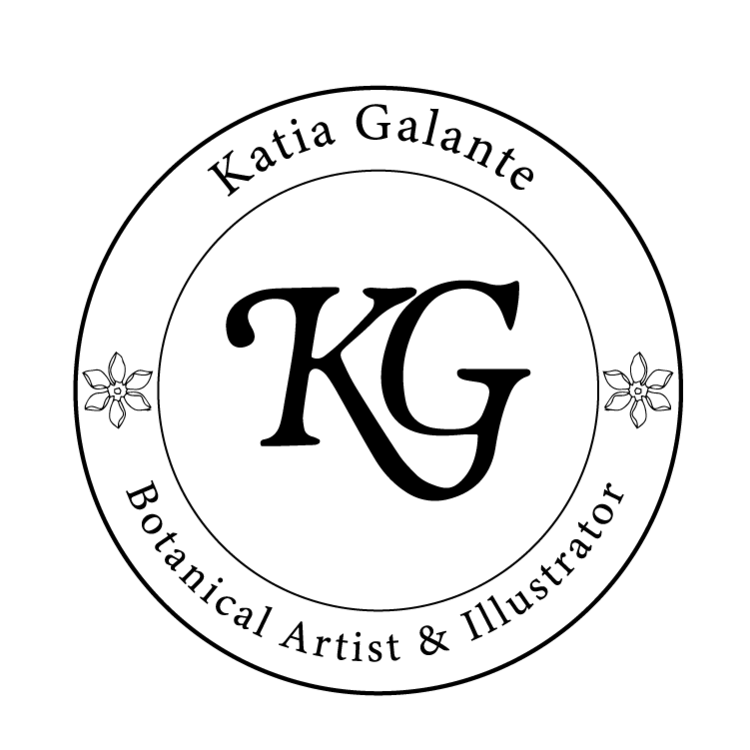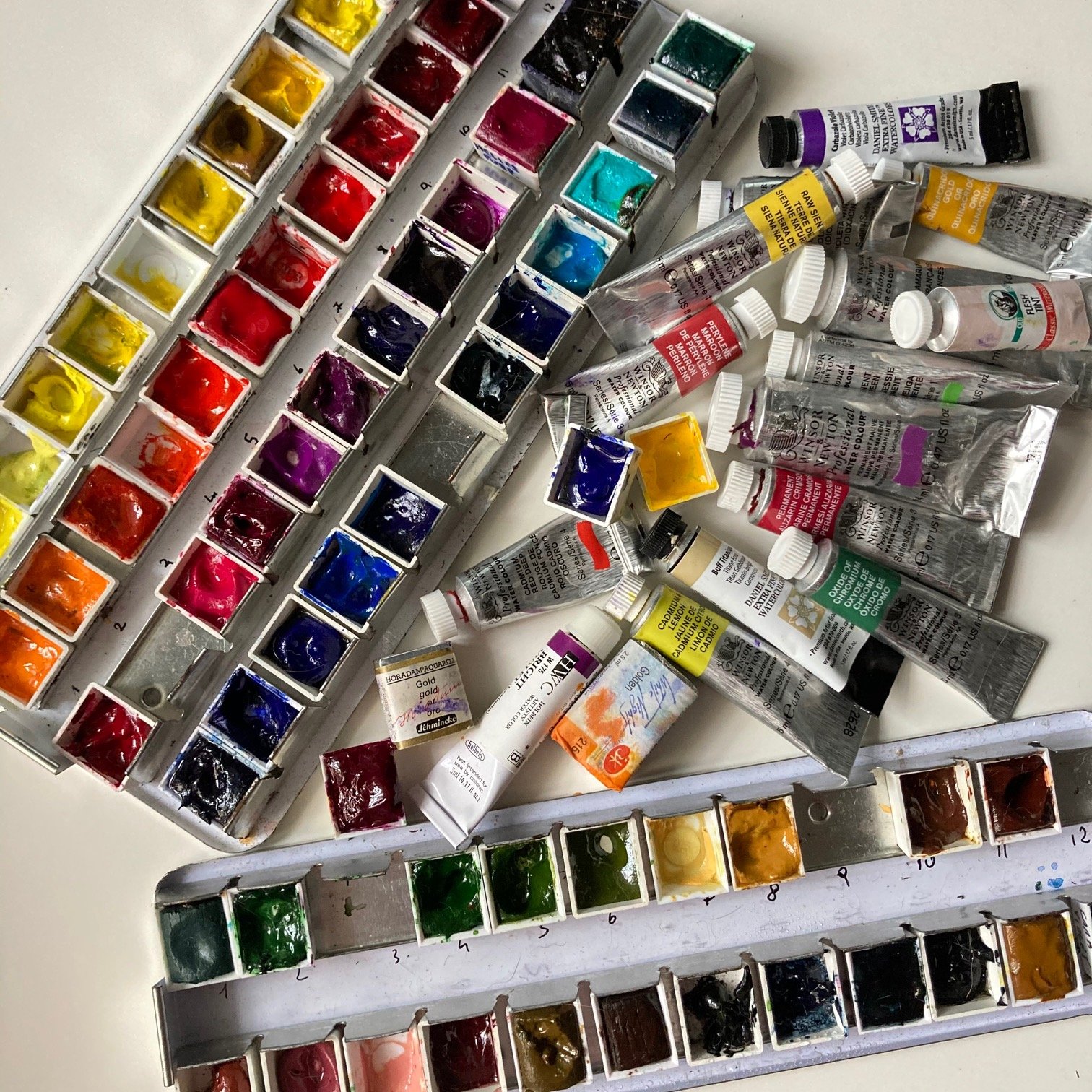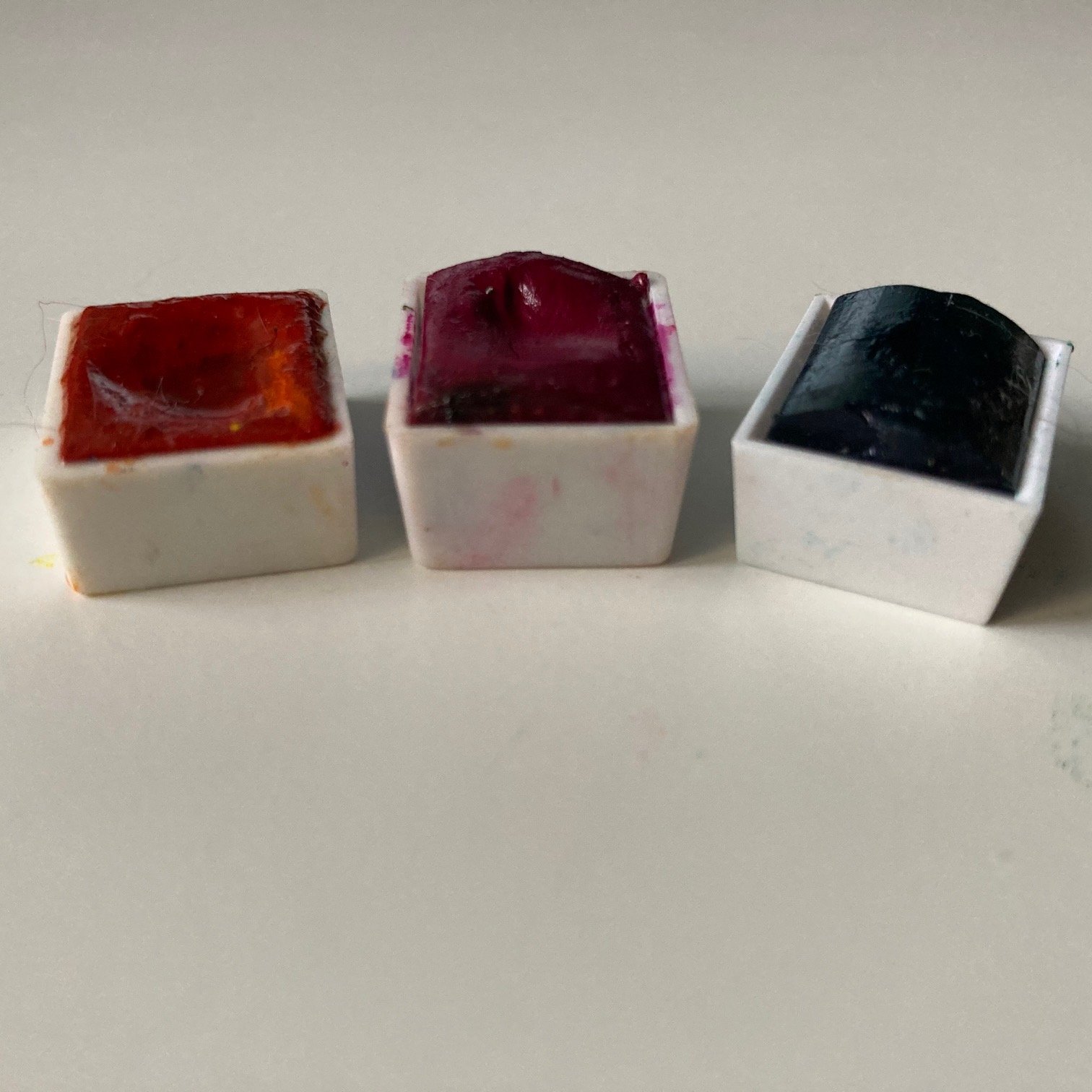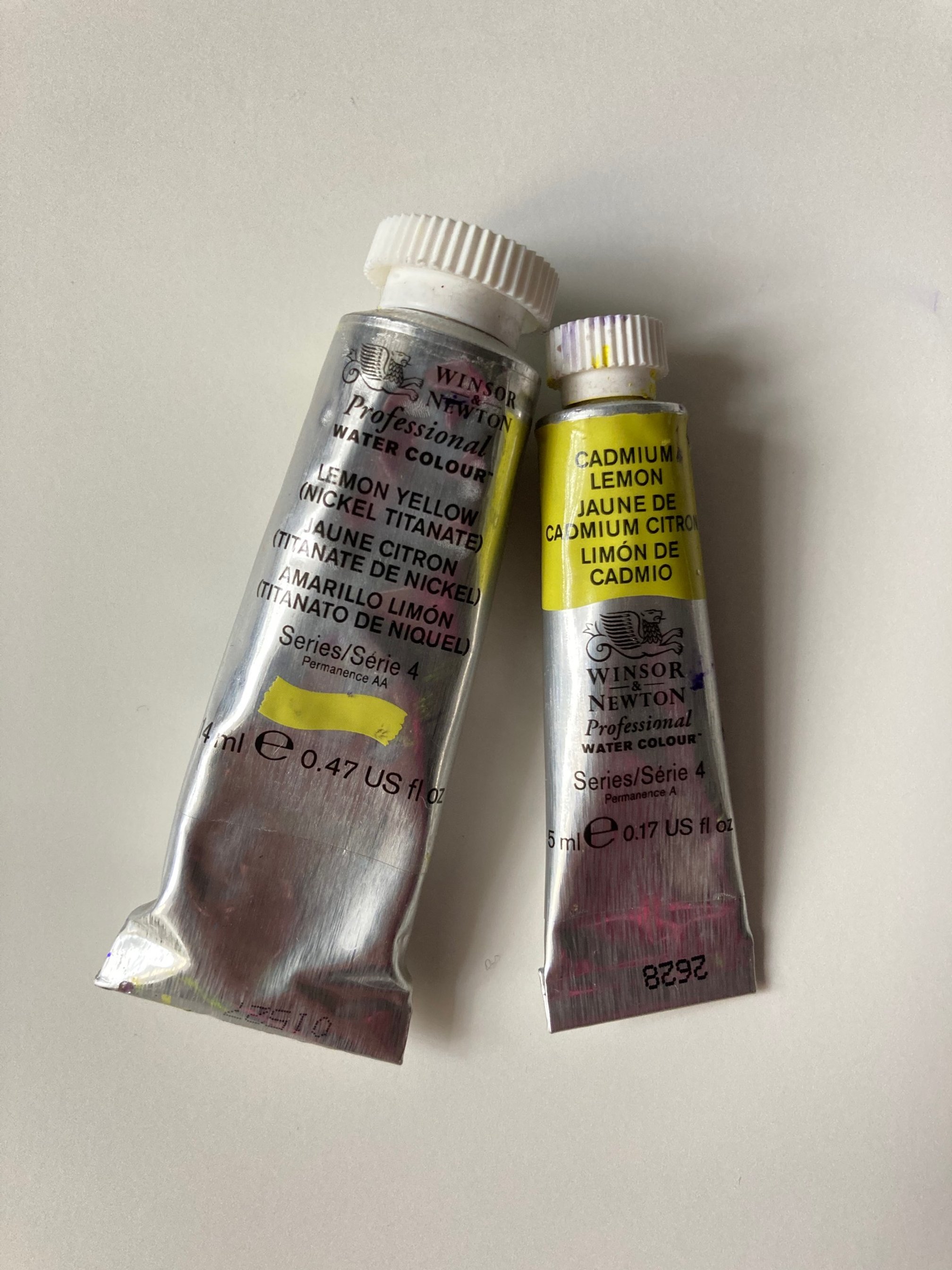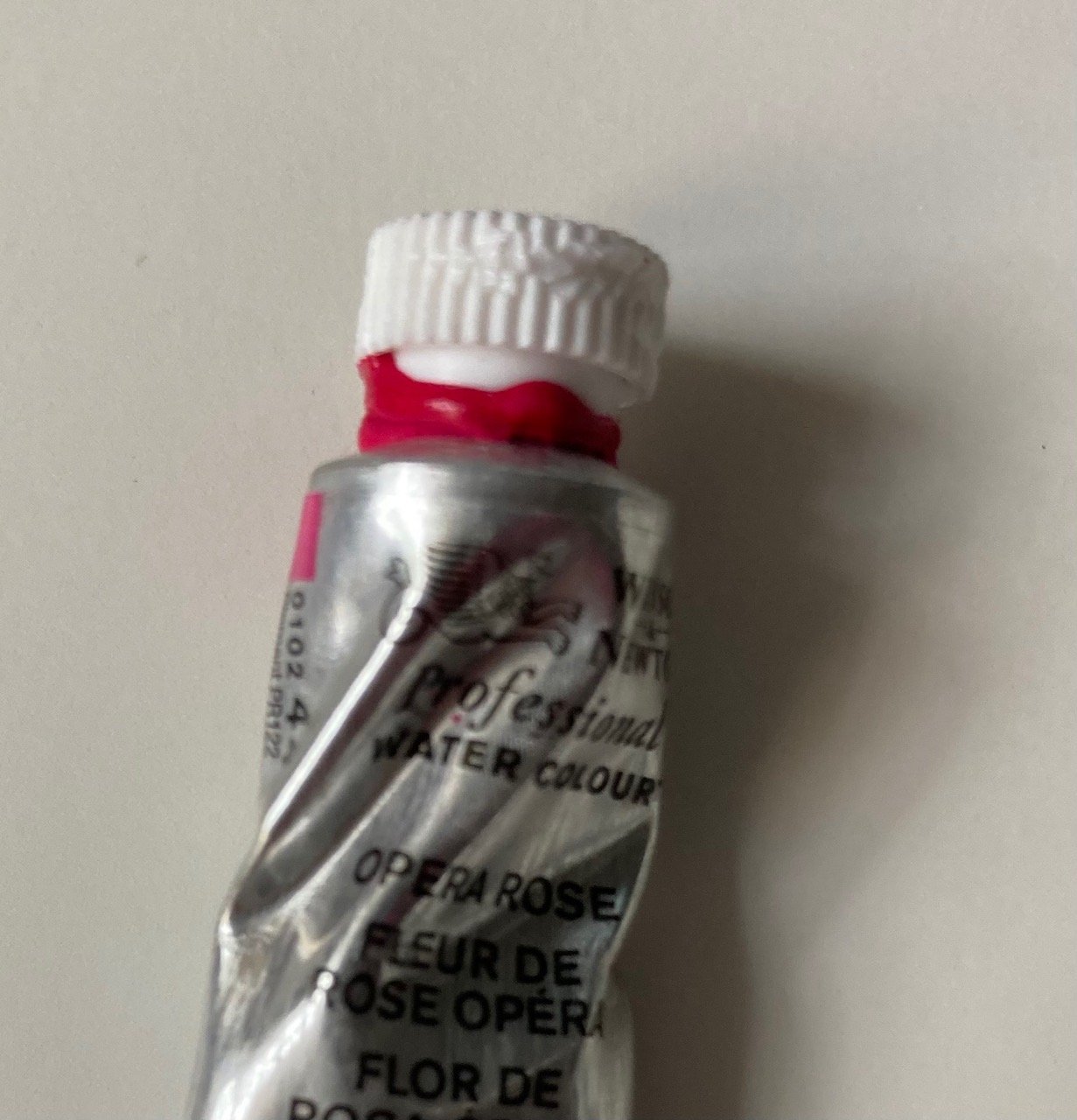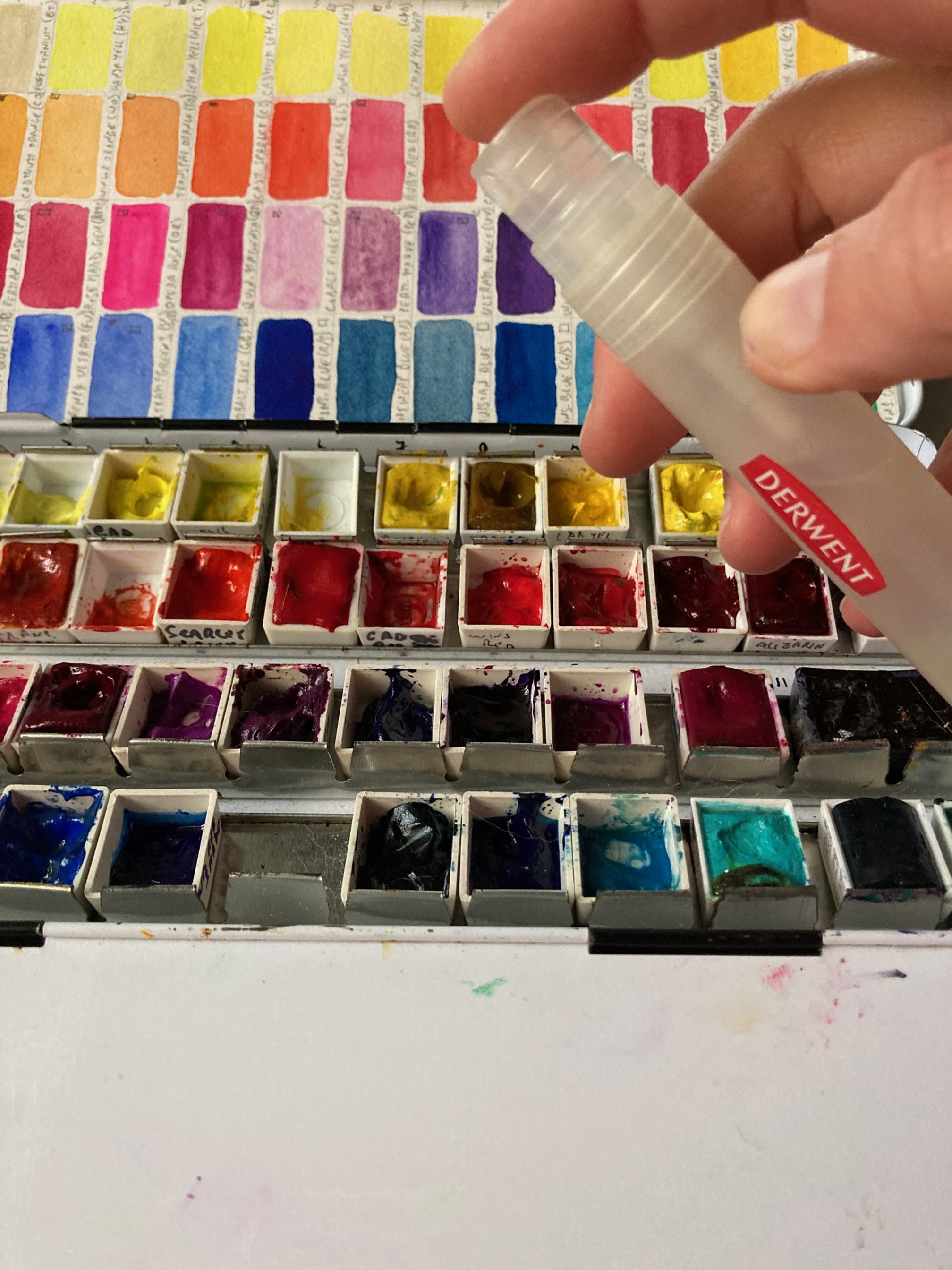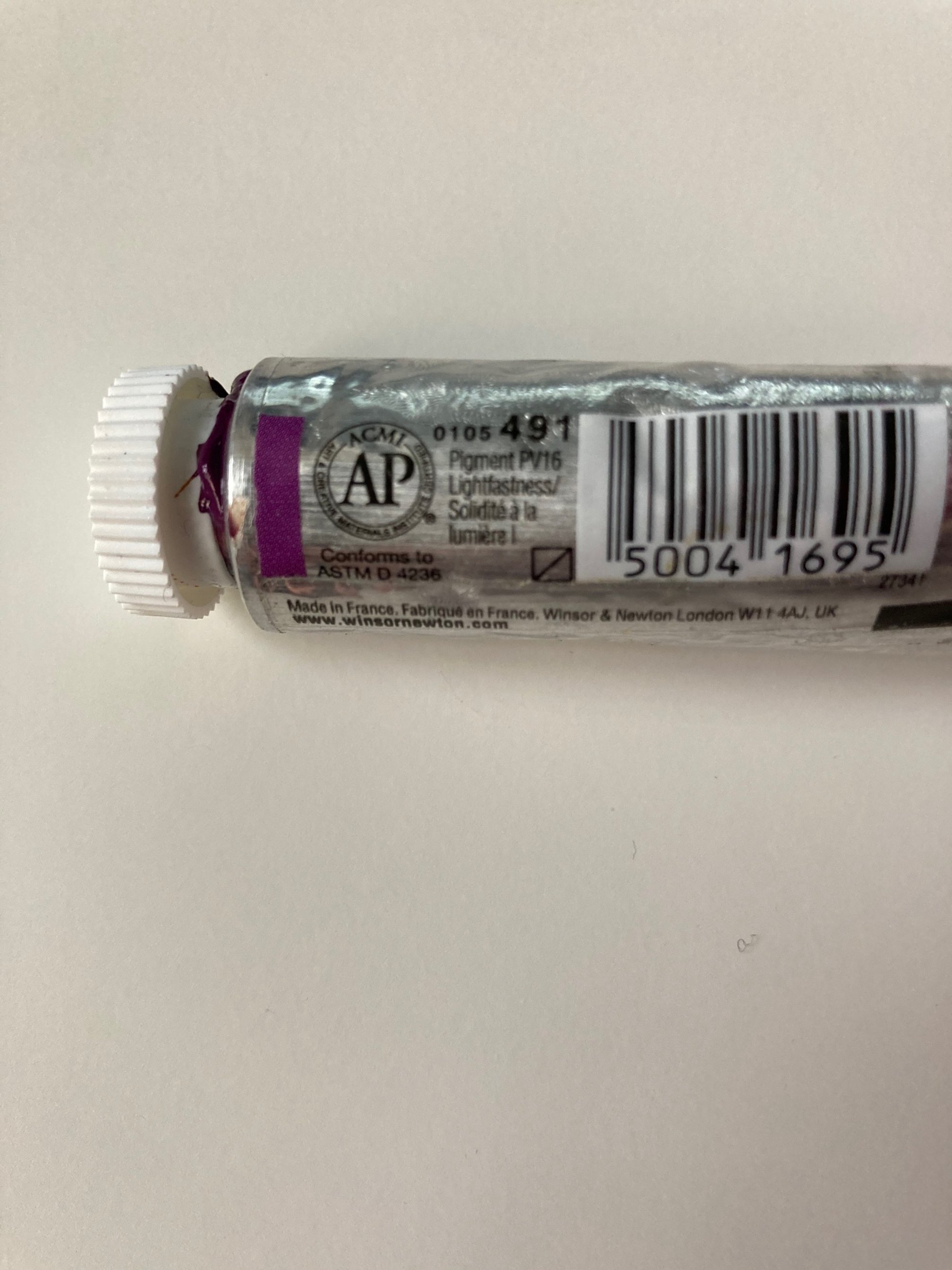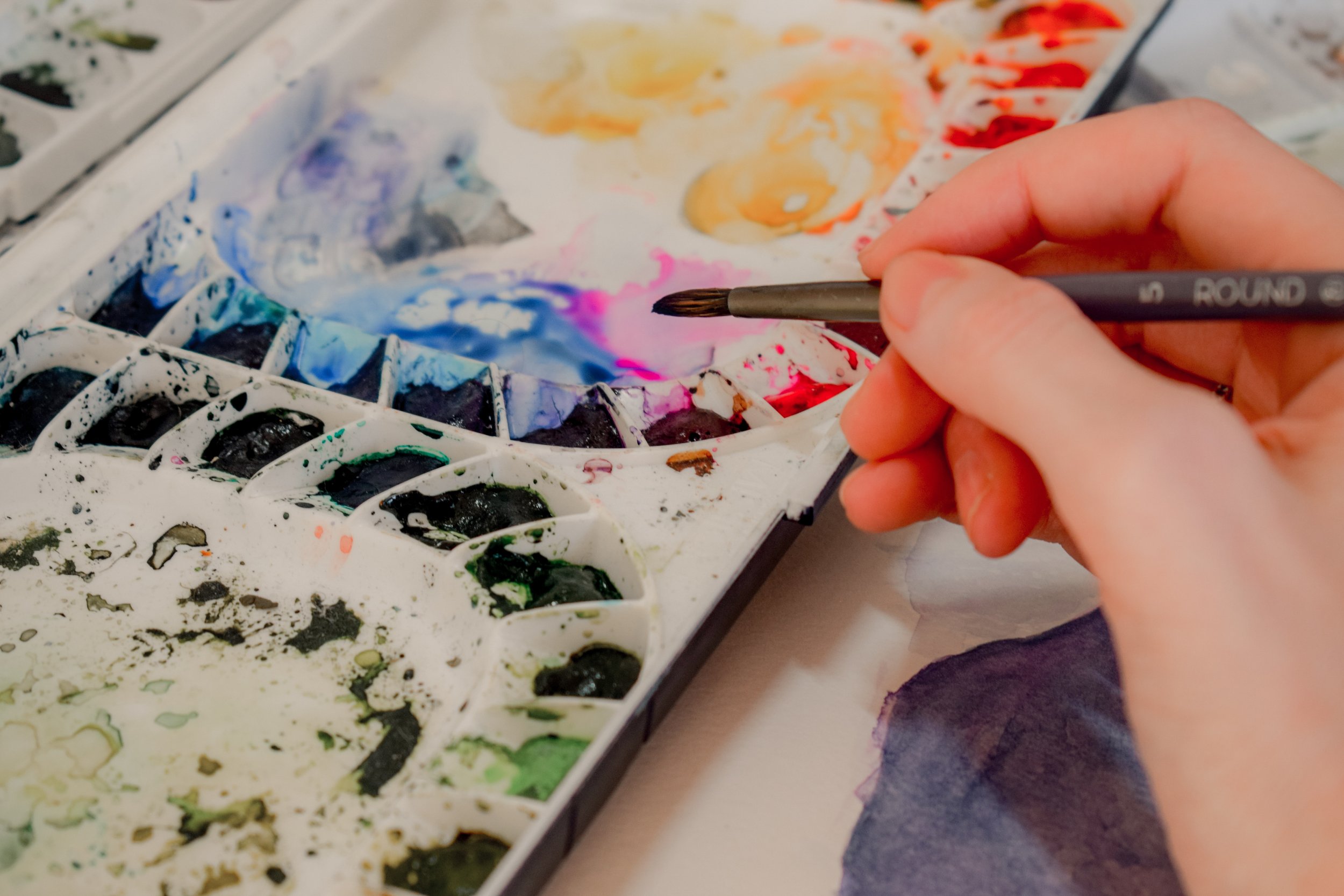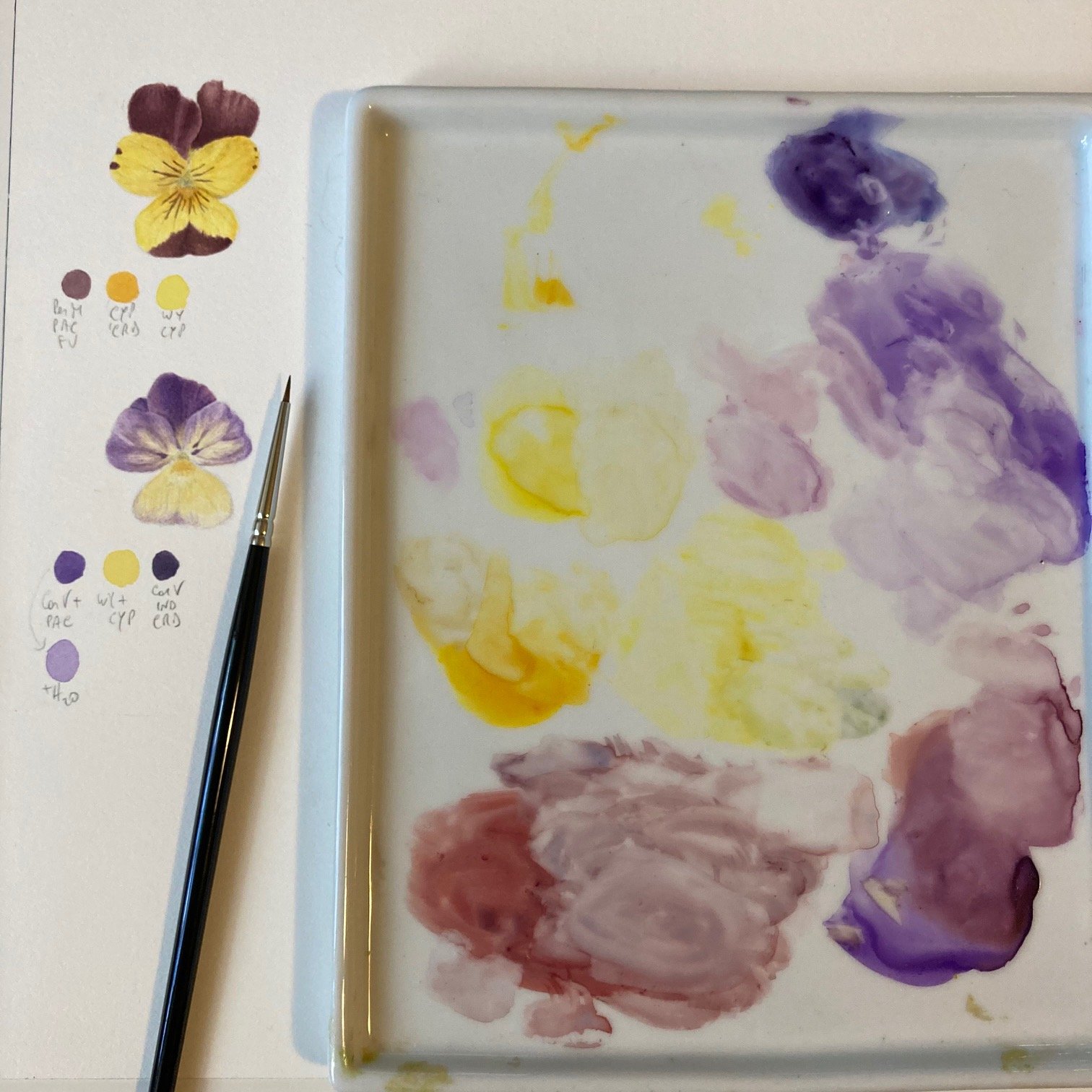I’ve been asked this question many times, should I use watercolor pans or tubes? Which one is better?
I’m afraid there isn’t a straight right or wrong answer to this question; whether you use pans or tubes depends on many different factors and in this post I will try to outline the differences, pros and cons of each type of watercolor paint so that you should be able to do a more informed choice.
Size Matters
Pans
Let’s have a look at sizes first. Pans come in two sizes (just to make your choice even easier, right?), half pan and full pan.
From left to right: Transparent Orange from Schmincke; Helios Purple from Sennelier; Winsor Green from Winsor & Newton
Generally these two sizes are almost the same across different brands but sometimes they wary ever so slightly so that you can’t actually use one box for different brands. This problem has been somewhat solved by the boxes with metal bendable compartments so they can accommodate variation in sizes. However if you have a box with rigid compartments you might find the pans from a different brand won’t fit.
Different manufacturers also use different methods and formulas to make the paint. Manufactures like Daniel Smith use honey in their paints, making the paint rich and soft; others use various amounts of gum arabic binder and flow or wetting agents. Even the way the pans are filled is different, some paints are dried before putting them into the pans and these are usually the ones that have a dome above the rim of the pan. Other paints are poured in the pans and these are level with the rim of the pan when you buy them. An example of the first type is Winsor & Newton paints and of the latter is Schmincke.
Tubes
Generally tubes come in 5ml and 14ml sizes, however I have seen other sizes too according to different manufacturers. For example you can find 15ml (schmincke), 21ml (Sennelier) or 37ml tubes (Winsor & Newton).
What are the Benefits of Watercolor Paint in Pans
Plain air painting
The first thing that comes to mind about watercolor in pans is the ease of use when painting in plain air.
If you are working outside you don’t really want to have to rummage in your bag to find the right tube of paint and then squeeze some of it on your palette and then maybe have to clean it away when you finish painting (thus wasting the paint) because it’s still wet and you can’t put the palette back in your bag like that.
They Take up Less Space
Another advantage of using pans in this case is that you can take many more colors with you because they take much less space compared to tubes.
Better When Traveling
Pans are also more convenient when traveling by plain as the paint in the tubes can expand if you have them in your suitcase and when you open them later you’ll have a little fountain of color sprouting out of your tube. Believe me, I’ve been there!
Less Waste
When using tubes you might end up wasting a bit more paint in the lids and you might have to cut open the tube to get all of the paint out, and even in this case there might still be some paint hard to reach. If you use a pan you can use up all of the paint without any problem.
Some waste might occur also if you squeeze out too much paint on your palette (or make a little paint fountain after a flight!). Sometimes the tubes are filled too much and when opened for the first time the paint comes out of its own accord (yup, been there too!).
If this happens to you too, just remember that you can let the paint dry on your palette and you can reactivate it with some water when you need it again. The only problem with this might arise if you only have one palette and you need to use other colors. That’s why I like to have more than one palette.
Where is the Paint?
When you open a new tube of paint, or even one that you haven’t used in a long while, you will see this funny looking substance coming out of the tube and no paint. At this point you might end up squeezing too much to get to the paint (you guessed it, done that too!). The substance is the gum arabic that separate from the paint. One way to try to avoid this is to use a thick needle or other such object, and try stirring the paint inside the tube.
Paint Dries in the Tube
I have some very old paint tubes that are still perfectly preserved, however it might happen that paint dries inside the tubes. This can happen for example if you don’t close the lid properly, or if the metal of the tube gets damaged somehow and air is allowed to enter. Sometimes, depending on the make of the paint, it might just dry because of old age.
When this happens the only solution is to cut open the tube to get to the paint, but it’s a tricky and messy business.
What are the Benefits of Watercolor Paint in Tubes
Easier to Pick up and Mix Paint
The paint inside tubes is already soft and moist so it’s much easier to pick up more paint and mix a larger quantity of color, while paint in pans is dried hard and it takes much longer to pick up enough paint, especially if you need a large quantity for, say, a background or landscape painting.
If I’m using pans I try to reduce this problem by spraying the paint with water a couple of minutes before I start painting (I use a Derwent spray bottle). However it will still take you a longer time to mix a large quantity of paint.
One problem I’ve experienced with pans is actually the contrary of this. In winter the houses in Sicily can get a little humid and the paints become very soft. This can render the paint a bit sticky and also you have to be careful to store the box flat or the paints might spill and contaminate one another.
Information About Paint
It is important to be able to see various information about the paint you’re using. For example if it’s transparent, number of pigments, if it’s lightfast, etc.
When using tubes you have these information readily available at the back of the tube, while with pans, once you take the wrapper off, the information is not there anymore. You can try saving the wrapper but we all know what happens to little pieces of paper like those, they end up in the “little pieces of paper realm” never to be found again!
Some makers do write some information on the side of the pan, but not all the manufacturers do this and even if they do, you would have to take the pan out of the box every time you want to check something.
One way to solve this problem could be to do a color chart of your paints and add all this information in the chart. It might seem time consuming but I’ve consulted this chart so many times it’s really worth the time!
If I fill the pan myself, I also write on the side of the pan what color it is because when the color is dry it might look very different from when it’s wet.
Use Palettes Instead of Pans
Photo by Eleonora Catalano on Unsplash
If you are using tubes you don’t have to use a specific container for pans, you can use ceramic palettes and squeeze whatever paint you like directly on the palette. Many artists have a set of favorite paints and use those over and over, therefore they squeeze some of the paint all around a ceramic flat palette and pick the paint as they need it. You can also find ceramic palettes with wells all around a flat space which are also good for this purpose.
If you like you can also purchase empty pans (half or full) and squeeze the paint into the pans thus customizing your color box.
Softer Paint, Happier Brushes
We all know we should use an old, cheap brush to pick up the paint and mix it because this activity can damage the brushes’ hairs. This is accentuated if you use your brush to pick up the paint form pans which are, as explained, much harder than paint squeezed from a tube.
If you use the softer paint freshly squeezed from a tube then it might be not as bad to use your good brush to pick up a bit more paint to mix in your palette. I wouldn’t recommend doing this all the time even with soft paint, but every now and then, with soft paint, it’s OK.
Color Difference?
If you’re wondering whether colors are stronger or better in one format or the other, don’t worry they are the same. Some manufacturers use exactly the same paint, so the end result is just the same.
You might feel paint in tubes is more pigmented but that’s probably because it’s much easier to pick up and thus you probably end up picking up more paint straight from the start, making the mixing process easier and faster compared to the dry paint of the pans.
I tend to use pans (ready-made or I squeeze paint from tubes into empty pans) because I do mostly botanical paintings and you don’t need a huge amount of paint for this type of art (as you can see from the picture below).
If you do landscapes or loose watercolor or still life, then you might want to try using tubes.
What’s your Favorite Format?
I hope this post has helped clarify the main differences and positive/negative attributes of watercolor paint in tubes and pans.
Do you have a favorite? Do you prefer tubes, pans, or you rather squeeze tubes onto palettes? And why do you like to work that way?
Let me know in the comments below, I’d love to hear your experience/opinion.
